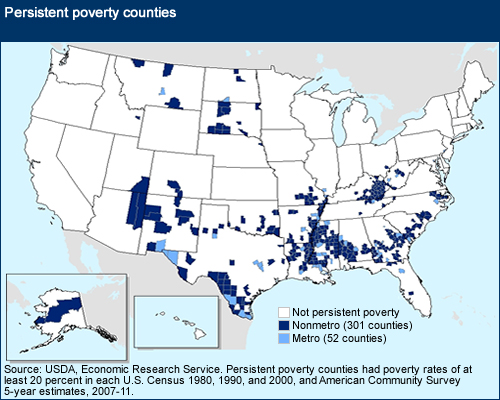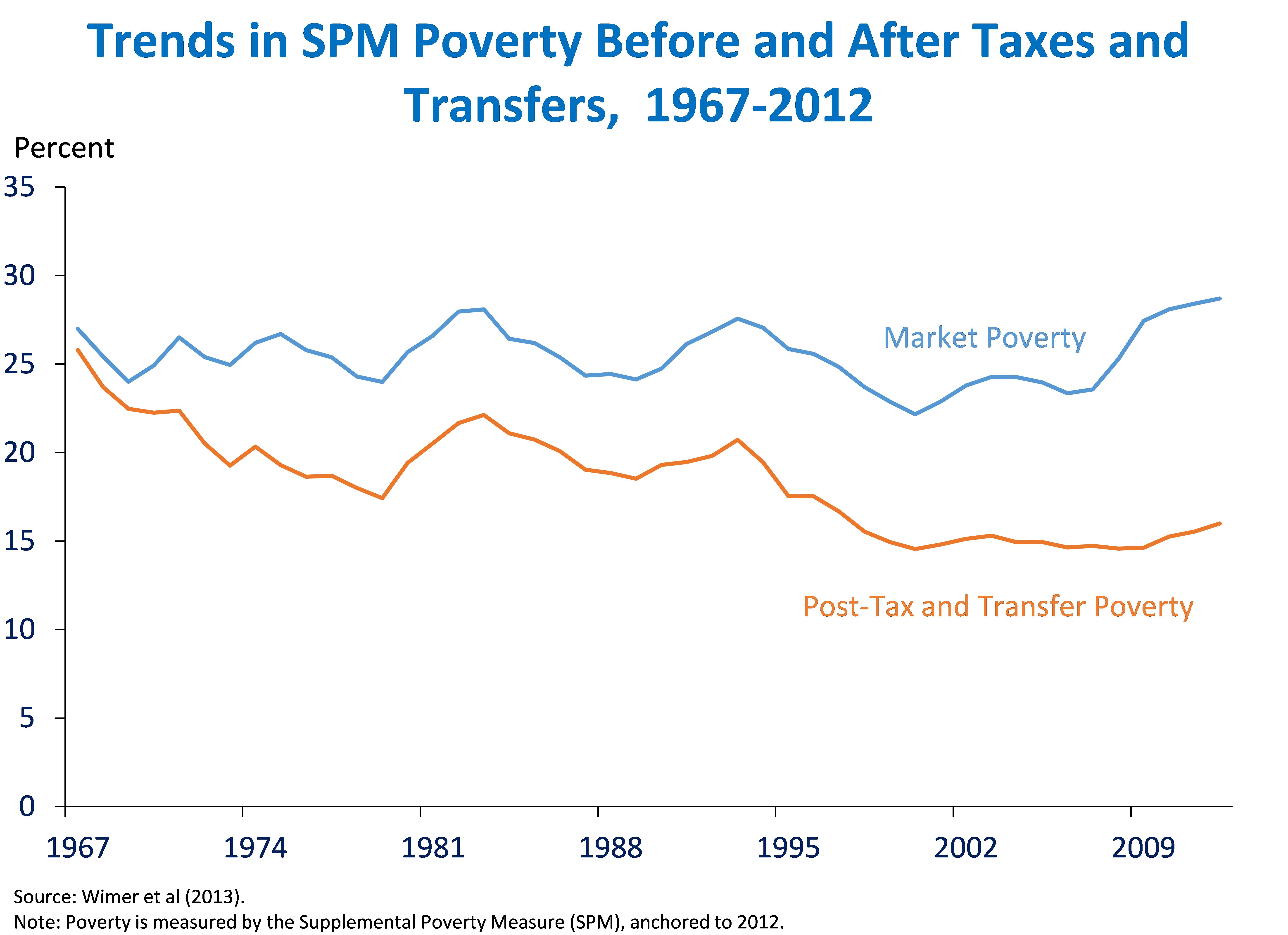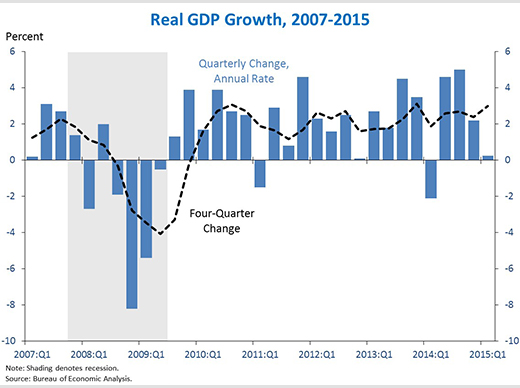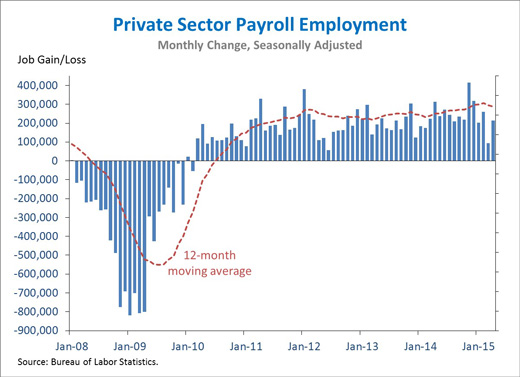Council of Economic Advisers Blog
Creating Opportunity for All in Rural Communities
Posted by on May 20, 2015 at 9:48 AM EDTRural America provides the vast majority of food and energy benefits for the rest of the country, is the source of nearly 90 percent of renewable water resources, and is home to important service sector and manufacturing hubs. Despite this critical role in our nation’s economy, too many Americans in rural areas are not sharing in our nation’s economic growth.
In 2013, 6.2 million Americans in rural areas lived in poverty, including about 1.5 million children. Moreover, in far too many of these communities, high rates of poverty have persisted for generations: Over 300 rural counties have had poverty rates of over 20 percent in every Census since 1980.

While the fight to eliminate poverty is far from over, today, as part of the White House Rural Council’s ongoing efforts to address rural child poverty, we released a report that finds that programs like refundable tax credits, Social Security, SNAP, and housing assistance lifted about 9.0 million rural people out of poverty in 2013, including about 1.6 million children.
Six Examples of the Long-Term Benefits of Anti-Poverty Programs
Posted by on May 11, 2015 at 8:06 AM EDTEconomists have traditionally argued that anti-poverty policy faces a “great tradeoff”—famously articulated by Arthur Okun—between equity and efficiency. Yet, recent work suggests that Okun’s famous tradeoff may be far smaller in practice than traditionally believed and in many cases precisely the opposite could be the case. As discussed by one of us in today’s New York Times, recent economic research, much of it using large, high-quality administrative data, shows that key income support, education, housing, health care, and nutritional assistance programs improve health outcomes, educational attainment, employment, and earnings in adulthood for individuals who received this support in childhood. This research suggests that the investments in nutrition assistance, health care, housing vouchers and other programs included in the President’s Budget would not only help low-income families today, but would also improve our future economic performance.
In the half century since President Lyndon B. Johnson declared an unconditional War on Poverty, the Federal Government has invested in strategies that aim to relieve and prevent poverty. Partly as a result of these programs, and a large number of additions and reforms since then, between 1967 and 2012, poverty measured by a measure that accounts for tax and transfer payments fell 9.8 percentage points, or 38 percent. In 2013, income and nutrition assistance programs lifted 46 million people, including 10 million children, out of the poverty. Medicaid has also resulted in better health care for tens of millions of Americans. Another 16 million people have gained coverage following the Affordable Care Act’s coverage expansions, as of early 2015.

The Employment Situation in April
Posted by on May 8, 2015 at 9:30 AM EDTThe economy added 223,000 jobs in April as the unemployment rate fell to 5.4 percent—the lowest since May 2008—and the participation rate ticked up. This report largely reflects the ongoing recovery, but jobs in April were likely also boosted by a temporary bounce-back from winter weather. Notwithstanding the substantial progress our economy has made, it is critical to continue the overall momentum and further strengthen wage growth. That is why the President is pursuing policies including opening new markets for U.S. goods and services through expanded trade, increasing investments in infrastructure, providing relief from the sequester, and raising the minimum wage.
FIVE KEY POINTS ON THE LABOR MARKET IN APRIL 2015
1. The private sector has added 12.3 million jobs over 62 straight months of job growth, extending the longest streak on record. Today we learned that private-sector employment rose by 213,000 in April. Our businesses and the economy as a whole created more than 200,000 jobs in thirteen of the past fourteen months—the first time that has happened since 1995. After taking into account the downward revision for the March jobs number, our economy has added 3.0 million new jobs over the past twelve months, nearly the fastest pace in more than a decade.
Learn more about , EconomyTen Facts about U.S. Trade
Posted by on May 1, 2015 at 12:09 PM EDTPresident Obama’s top priority is to make sure the United States builds on its economic momentum by continuing to grow businesses, create jobs, and expand the middle class. That is why the President is committed to free and fair trade agreements that level the playing field and benefit American businesses and workers.
A new report released this morning by the Council of Economic Advisers presents original empirical evidence, alongside a summary of the extensive economic literature, on a broad range of effects of enhanced U.S. trade and U.S. free trade agreements (FTAs). Highlights from this report include:
Learn more aboutAdvance Estimate of GDP for the First Quarter of 2015
Posted by on April 29, 2015 at 9:30 AM EDTEconomic growth in the first quarter was restrained by factors including tepid foreign demand and harsh winter weather. At the same time, households saved most of their gains from low energy prices, Over the past four quarters, the most persistent and stable components of GDP — consumption and fixed investment — have grown 3.3 percent. This trend complements the strong pace of job growth and unemployment reduction over the last year. This report underscores that the U.S. economy is directly affected by the global economy, making clear the importance of advancing Trade Promotion Authority in Congress so the President can take further steps to open up markets abroad to increase U.S. exports and expand opportunities for the middle class. In addition, we could further solidify the positive trends in the domestic economy by expanding investments in infrastructure and ensuring the sequester does not return in the next fiscal year as outlined in the President’s FY2016 Budget.
FIVE KEY POINTS IN TODAY’S REPORT FROM THE BUREAU OF ECONOMIC ANALYSIS
1. Real gross domestic product (GDP) grew 0.2 percent at an annual rate in the first quarter of 2015, according to the advance estimate from the Bureau of Economic Analysis. The report, which was likely affected by notably harsh winter weather in the first quarter (see point 2), reflects a slowdown in personal consumption as well as declines in fixed investment and net exports — as U.S. exports continue to be restrained by the global growth slowdown (see point 4). Indeed, the decline in net exports subtracted more than a full percentage point from quarterly GDP growth. Another major contributor to the slowdown was declining investment in mining exploration, shafts, and wells — likely reflecting the response to the sharp decline in oil prices — that subtracted more than half a percentage point from quarterly growth. Four-quarter growth of real GDP rose to 3.0 percent as the 2014-Q1 decline dropped out of the four-quarter moving average.
 Learn more about Economy
Learn more about EconomyFive Facts About the Gender Pay Gap:
Posted by on April 14, 2015 at 3:56 PM EDTOver the past century, American women have made tremendous strides in increasing their labor market experience and their skills. On Equal Pay Day, however, we focus on a stubborn and troubling fact: Despite women’s gains, a large gender pay gap still exists. In 2013, the median woman working full-time all year earned 78 percent of what the median man working full-time all year earned. A new issue brief from the Council of Economic Advisers examines what we know about the pay gap.
1. The pay gap goes beyond wages and is even greater when we look at workers’ full compensation packages. Women are less likely to have an offer of health insurance from their employer, have retirement savings plans, or have access to paid leave, and perhaps as a result, they are more likely to take leave without pay.

These broader measures of compensation show that the pay gap is not just about differences in earnings or wages. But why do women earn less than men? Let’s break it apart so we can better understand what is driving the pay gap.
- &lsaquo previous
- 1
- 2
- 3
- 4
- 5
- 6
- 7
- 8
- 9
- …
- next &rsaquo
White House Blogs
- The White House Blog
- Middle Class Task Force
- Council of Economic Advisers
- Council on Environmental Quality
- Council on Women and Girls
- Office of Intergovernmental Affairs
- Office of Management and Budget
- Office of Public Engagement
- Office of Science & Tech Policy
- Office of Urban Affairs
- Open Government
- Faith and Neighborhood Partnerships
- Social Innovation and Civic Participation
- US Trade Representative
- Office National Drug Control Policy
categories
- AIDS Policy
- Alaska
- Blueprint for an America Built to Last
- Budget
- Civil Rights
- Defense
- Disabilities
- Economy
- Education
- Energy and Environment
- Equal Pay
- Ethics
- Faith Based
- Fiscal Responsibility
- Foreign Policy
- Grab Bag
- Health Care
- Homeland Security
- Immigration
- Innovation Fellows
- Inside the White House
- Middle Class Security
- Open Government
- Poverty
- Rural
- Seniors and Social Security
- Service
- Social Innovation
- State of the Union
- Taxes
- Technology
- Urban Policy
- Veterans
- Violence Prevention
- White House Internships
- Women
- Working Families
- Additional Issues


